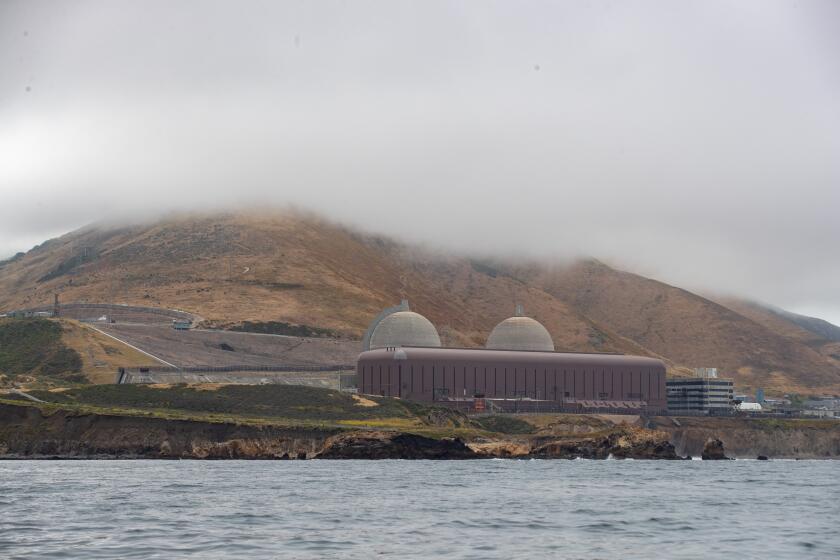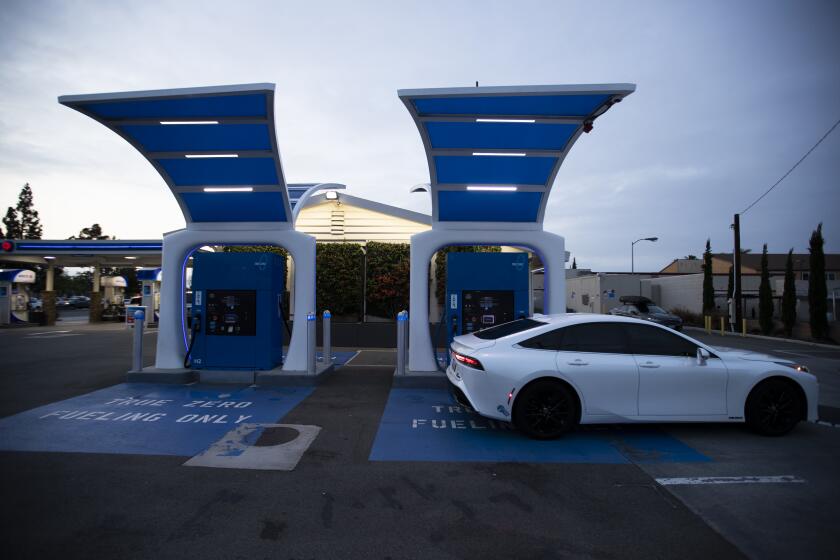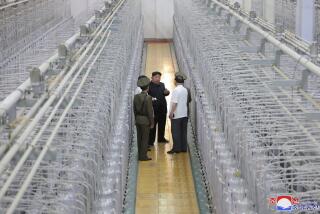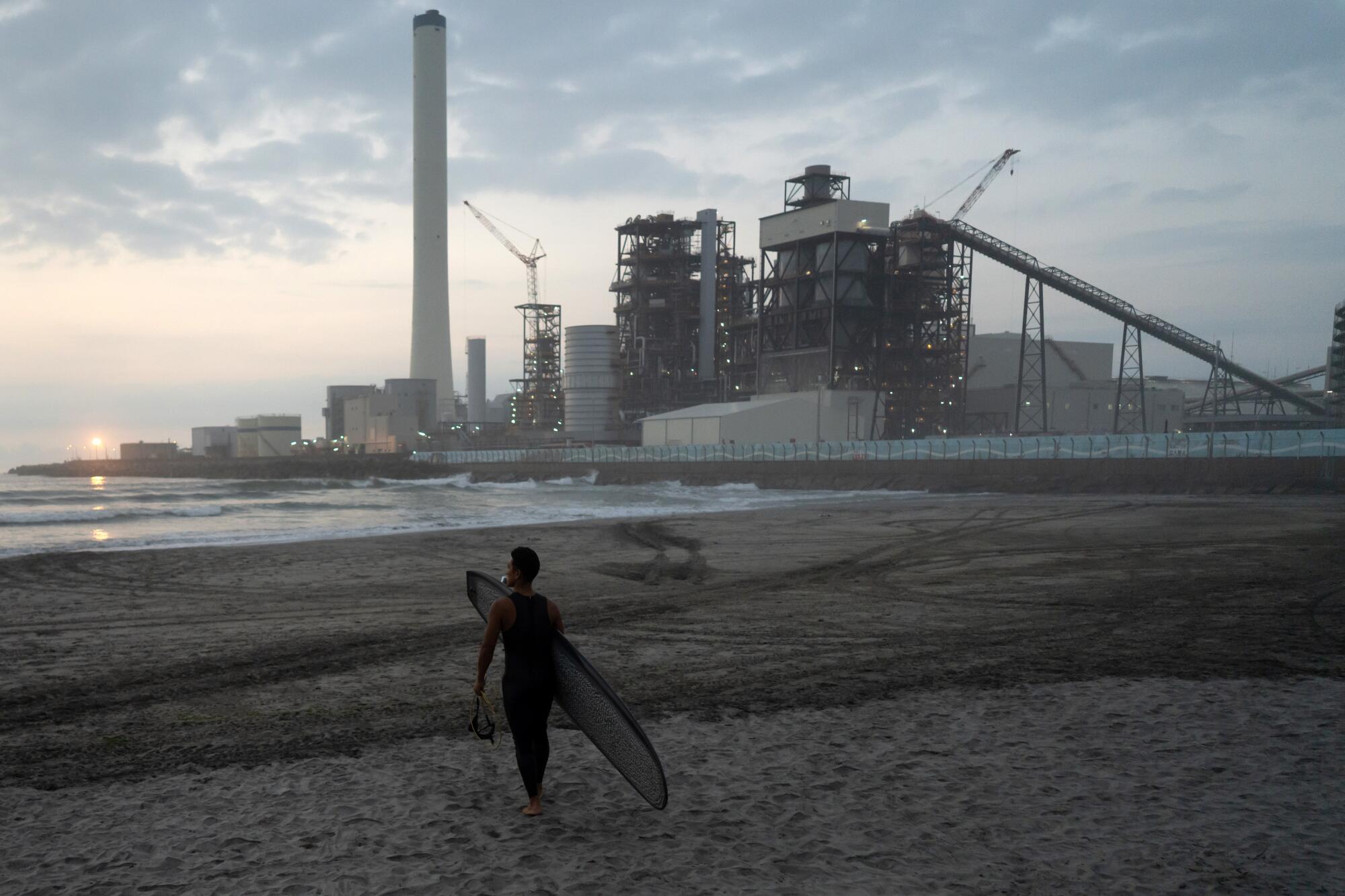
NAMIE, Japan — A quarter-mile inland from the eastern Japanese coastline, a sprawling complex of solar panels, robotic lawnmowers and the world’s largest hydrogen power plant stands as a monument to the country’s zero-carbon aspirations.
But surrounding the site are reminders of the biggest challenge Japan faces in realizing those ambitions: abandoned buildings, empty lots, roadside Geiger counters — the grim aftermath of one of the world’s worst nuclear disasters.
As climate change worsens, nations around the globe have ramped up efforts to reduce fossil fuel use and reach carbon neutrality by 2050. But for Japan to achieve that goal, the government says it must turn back to the country’s now-idled nuclear power plants, reigniting a painful debate over the necessity and safety of nuclear energy.
On March 11, 2011, the largest earthquake in Japan’s recorded history triggered a tsunami that killed more than 18,000 people and knocked out power for the cooling systems at the Fukushima Daiichi power plant. The subsequent nuclear meltdown prompted the evacuation of nearby residents to escape harmful radiation.
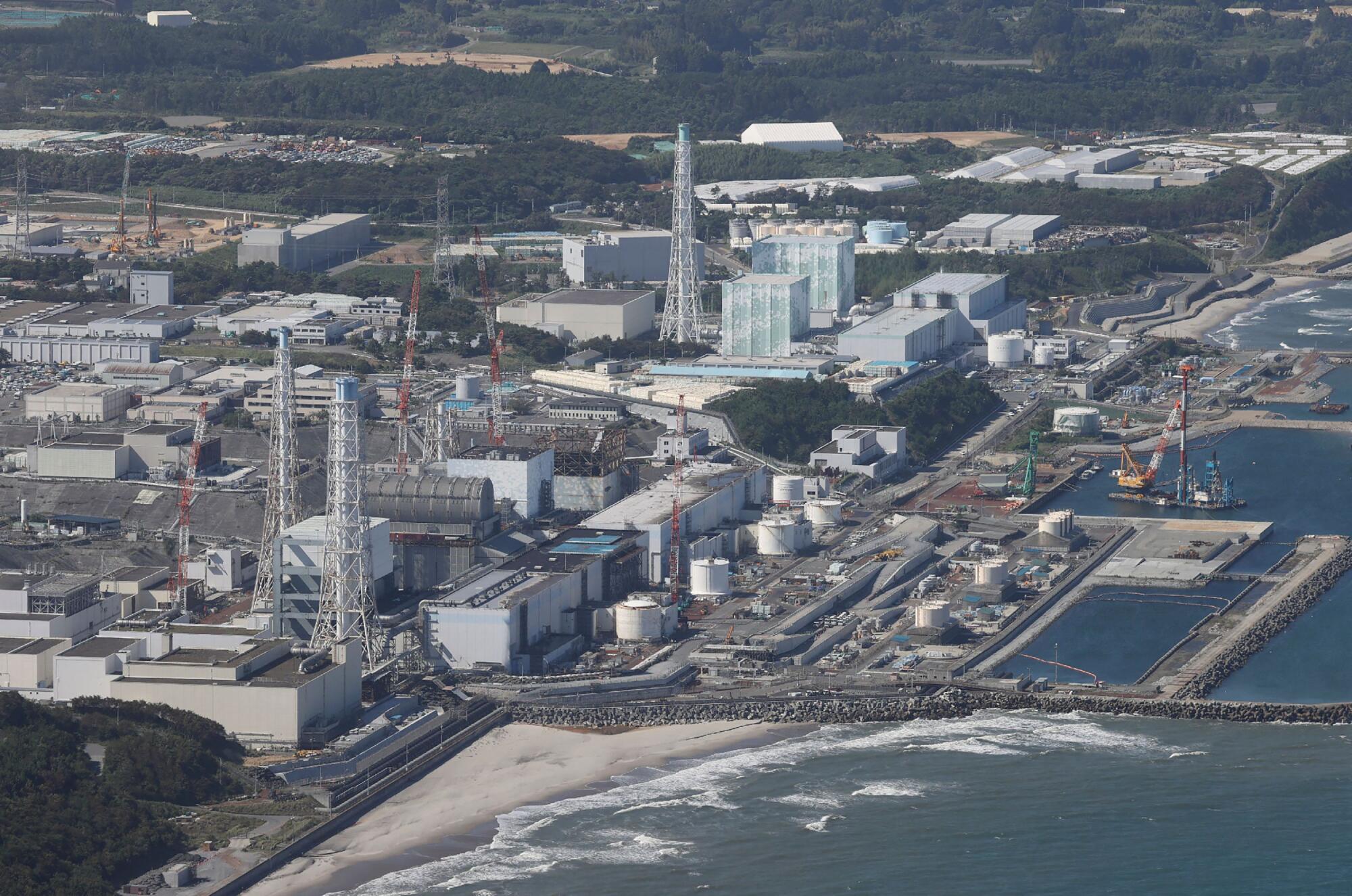
Twelve years later, some areas in Fukushima prefecture remain uninhabitable, and some of its residents remain vehemently opposed to nuclear power.
“Neither the national nor local government will protect the community from local disasters,” said Sumio Konno, 59, who grew up here in Namie, several miles north of the Daiichi plant, and fled during the disaster. “If they can’t protect us, we shouldn’t have such nuclear power plants.”
Gov. Gavin Newsom is pushing to keep Diablo Canyon open past its 2025 shutdown deadline.
Namie’s population of 1,200 is still less than a tenth of what it was before the meltdown. Futaba, a town just west of the plant, reopened for residents to return only last year.
After the accident, nuclear power as a proportion of Japan’s electricity mix fell from about 30% to 6% in 2019. But the country’s plan to halve its use of fossil fuels in power generation by 2030 is contingent on boosting nuclear energy back up to at least 20%.
To accomplish that, Japan would need to restart 15 more of its 33 nuclear reactors, said Tatsuya Terazawa, chief executive of the Institute of Energy Economics, Japan. For years after the disaster, all of them were shut down and faced steep safety hurdles and public opposition to restarting. So far, 12 reactors have resumed operations.
1
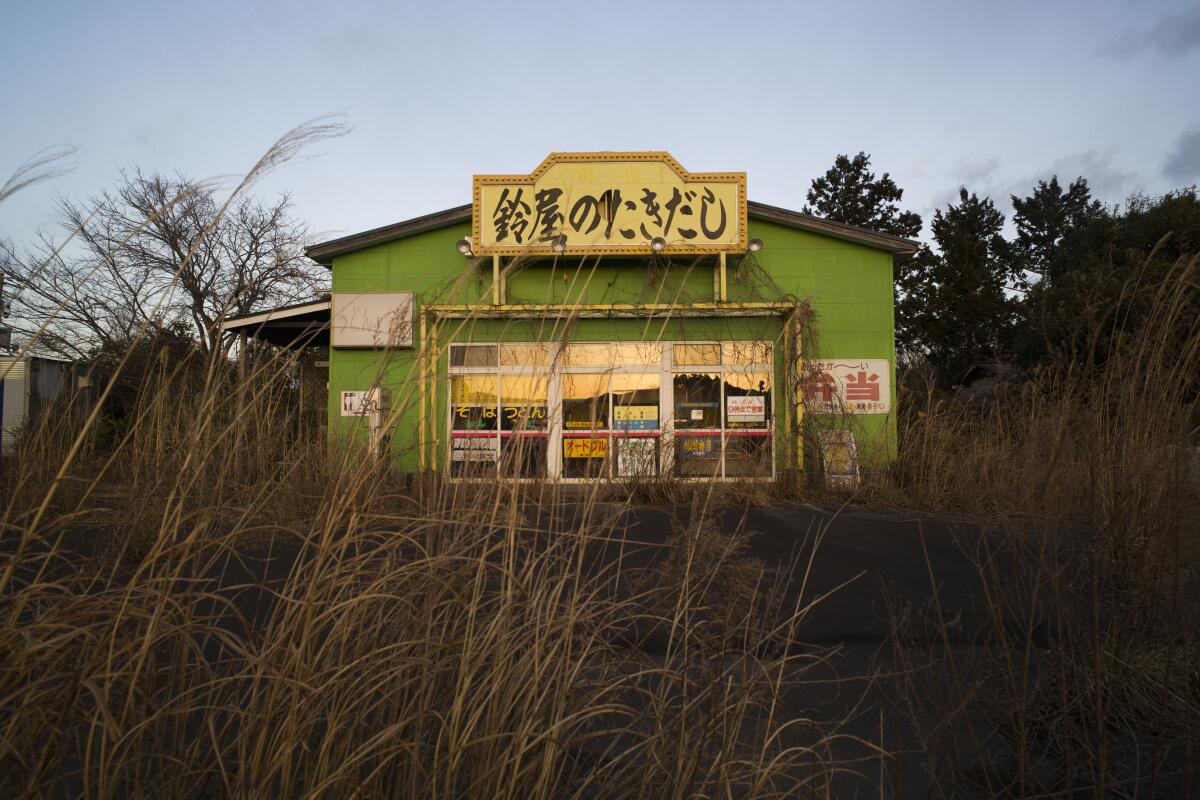
2
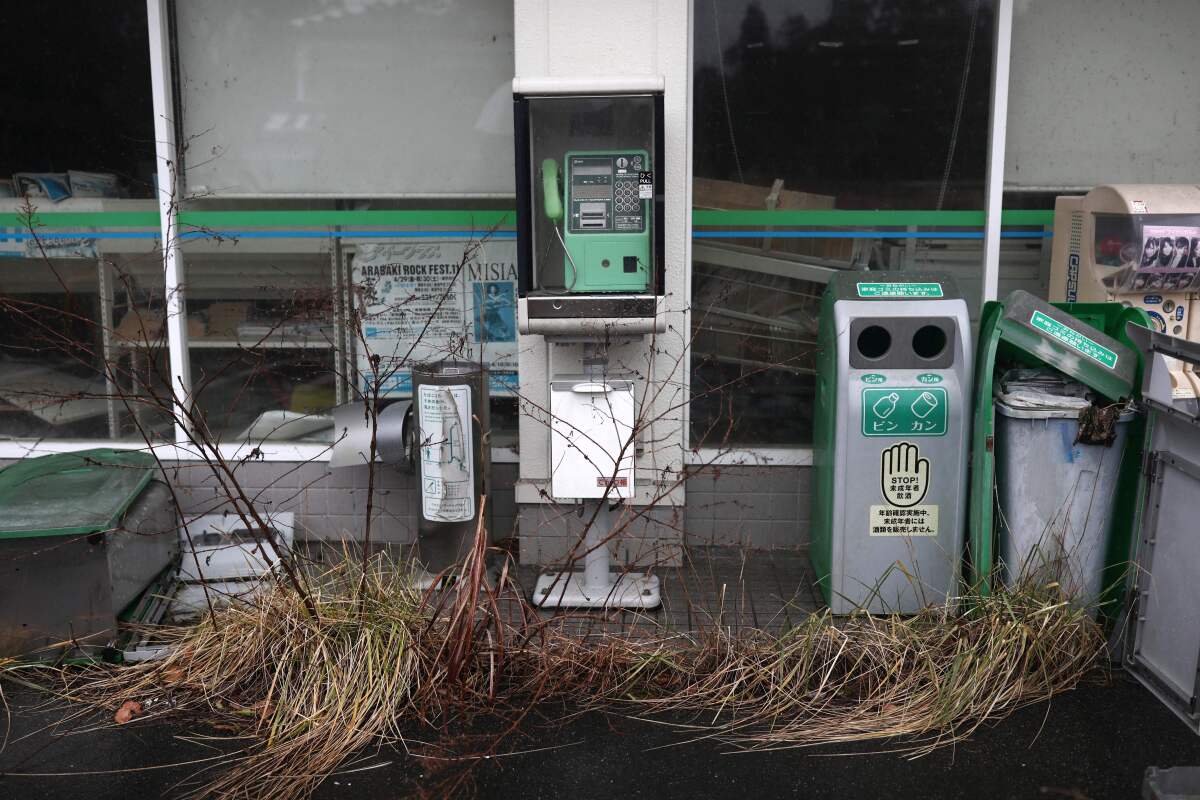
3
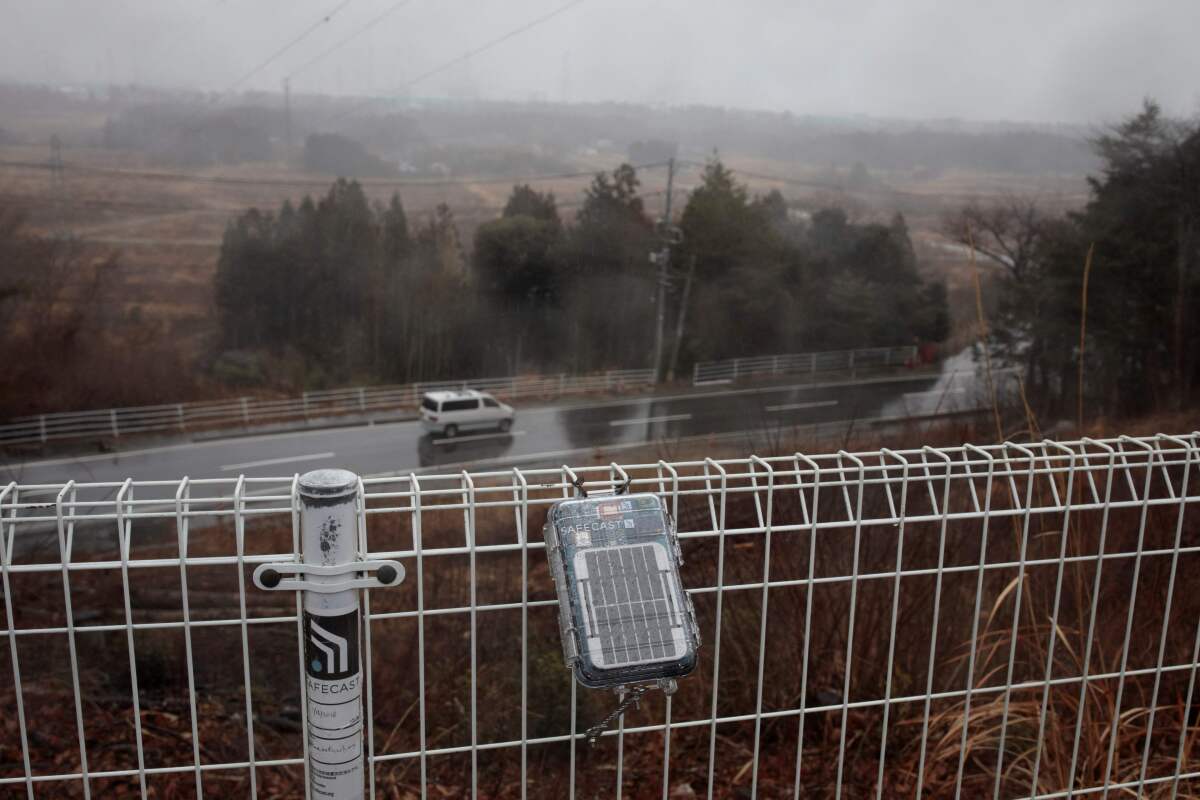
1. An abandoned restaurant stands surrounded by weeds in the nuclear exclusion zone in the town of Tomioka in Fukushima Prefecture in northeastern Japan. (Hiro Komae / Associated Press) 2. A payphone sits disused inside the nuclear exclusion zone of Futaba town in Fukushima Prefecture, Japan. (Behrouz Mehri / AFP via Getty Images) 3. A Geiger counter is attached to a fence near the Daiichi nuclear power plant in Fukushima Prefecture in northeastern Japan. (Behrouz Mehri / AFP via Getty Images)
Environmental organizations and nuclear power critics argue that Japan can avoid restarting nuclear plants by building more solar and wind farms, increasing energy efficiency and improving flexibility in the country’s electricity distribution system.
“The Japanese government claims that 100% renewable energy is impossible and that both nuclear power and thermal power are needed,” said Akiko Yoshida, a campaigner with the environmental group Friends of the Earth Japan. “What is needed, however, is a flexible power system that makes the best use of fluctuating renewable energy.”
But Terazawa said such improvements would help only marginally with Japan’s energy needs and would face their own challenges. Although Japan is working to develop more renewable energy, limited land has hampered expansion of wind and solar, he said. Favorable tax incentives have already spurred rapid growth in solar, while lower wind speeds and more frequent typhoons also make wind power less reliable in Asia, he added.
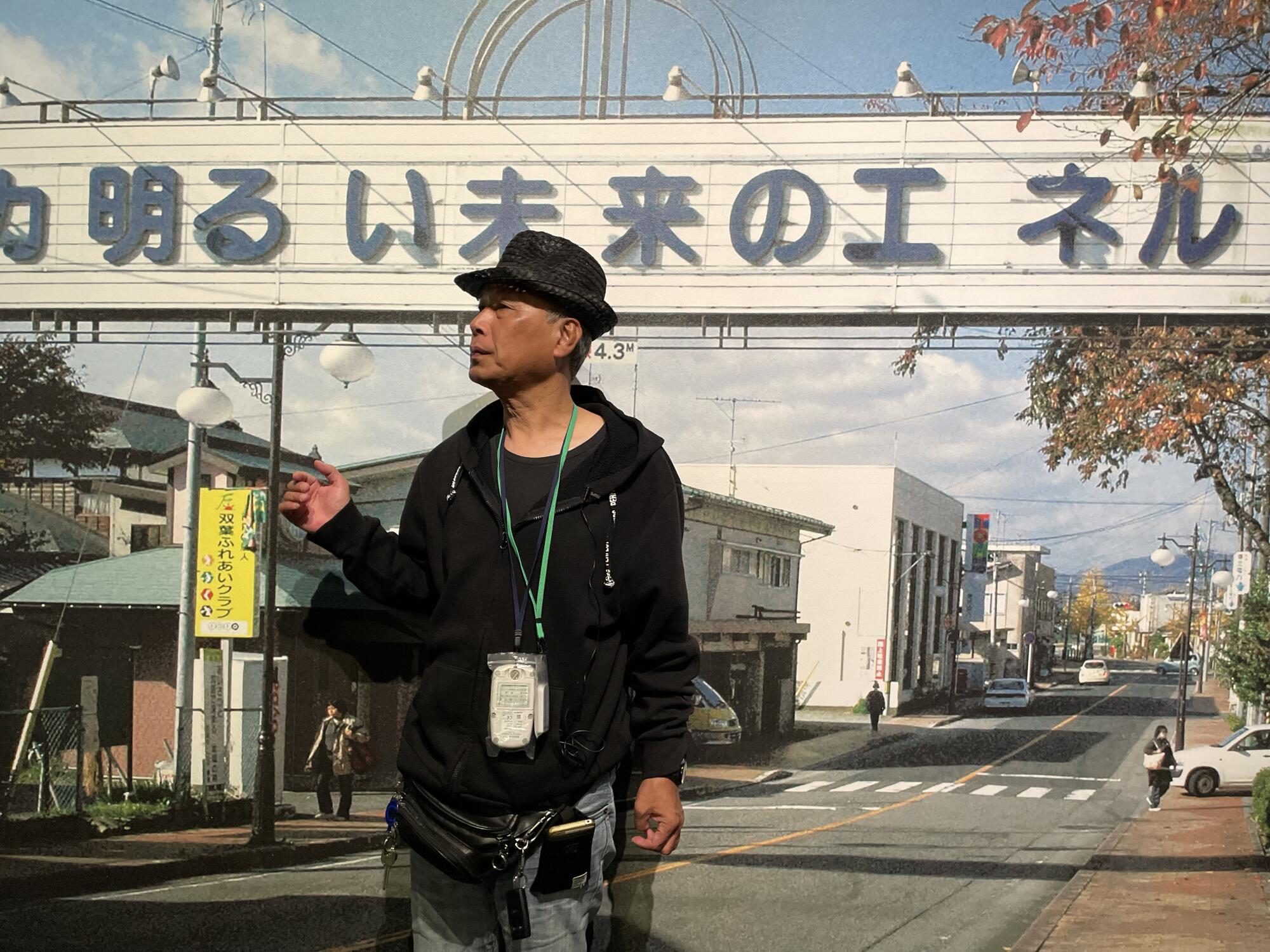
Without nuclear energy, Terazawa said Japan would need to import more costly hydrogen, to fuel transportation and manufacturing, and also ammonia, which when mixed with coal and gas helps reduce emissions from burning. Hydrogen and ammonia are expected to account for only about 1% of Japan’s power mix by 2030.
“The reality is that we still face constraints,” Terazawa said. “We will need nuclear for a zero-carbon source of power.”
The reassessment of nuclear energy as a crucial source of low-carbon power has been hastened globally by growing concerns over climate change and rising energy costs amid the wars in Ukraine and Gaza. During an annual United Nations climate conference on Dec. 2, 22 countries, including the U.S., Canada, France, Britain and Japan, signed a pledge to triple nuclear generation capacity by 2050.
In the last couple of years, Japanese Prime Minister Fumio Kishida has pushed to reopen nuclear plants, extend their lifespans and possibly build new ones. Although Kishida said he wants to minimize reliance on nuclear energy, he has also said it will be an essential part of decarbonization.
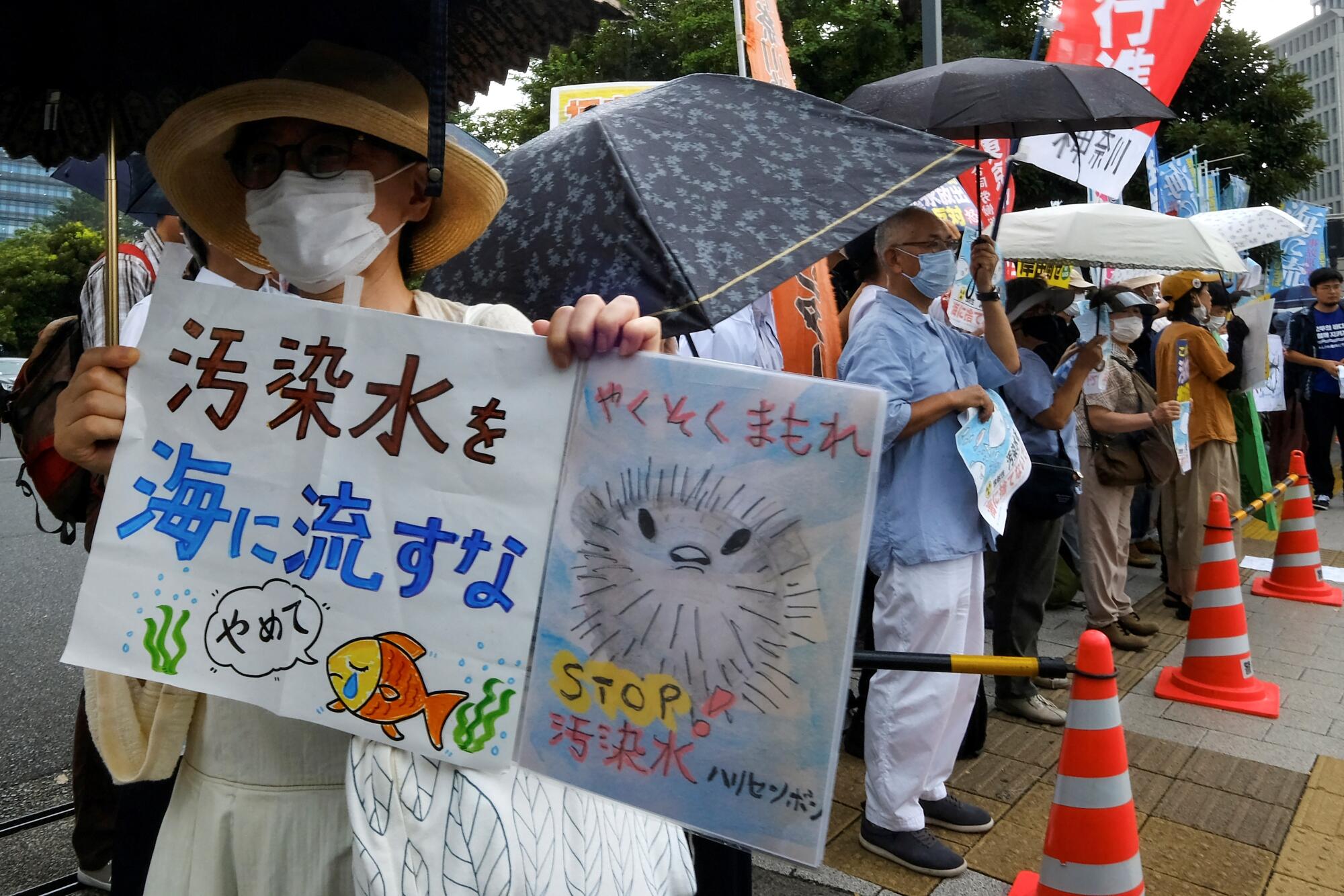
Some surveys show that Japanese are warming to the idea. According to an annual poll by the newspaper Asahi Shimbun, a slim majority of respondents — 51% — were in favor of restarting idled nuclear plants for the first time since the Fukushima meltdown. The idea of building new reactors was less popular, with 45% in favor and 46% opposed.
To some residents of Fukushima prefecture, even in places that were never evacuated, returning to nuclear energy still seems a risk.
Last year, six plaintiffs who lived in the prefecture and were diagnosed with thyroid cancer after the 2011 disaster sued the Tokyo Electric Power Company, or Tepco, the operator of the Daiichi power plant, for nearly $5 million.
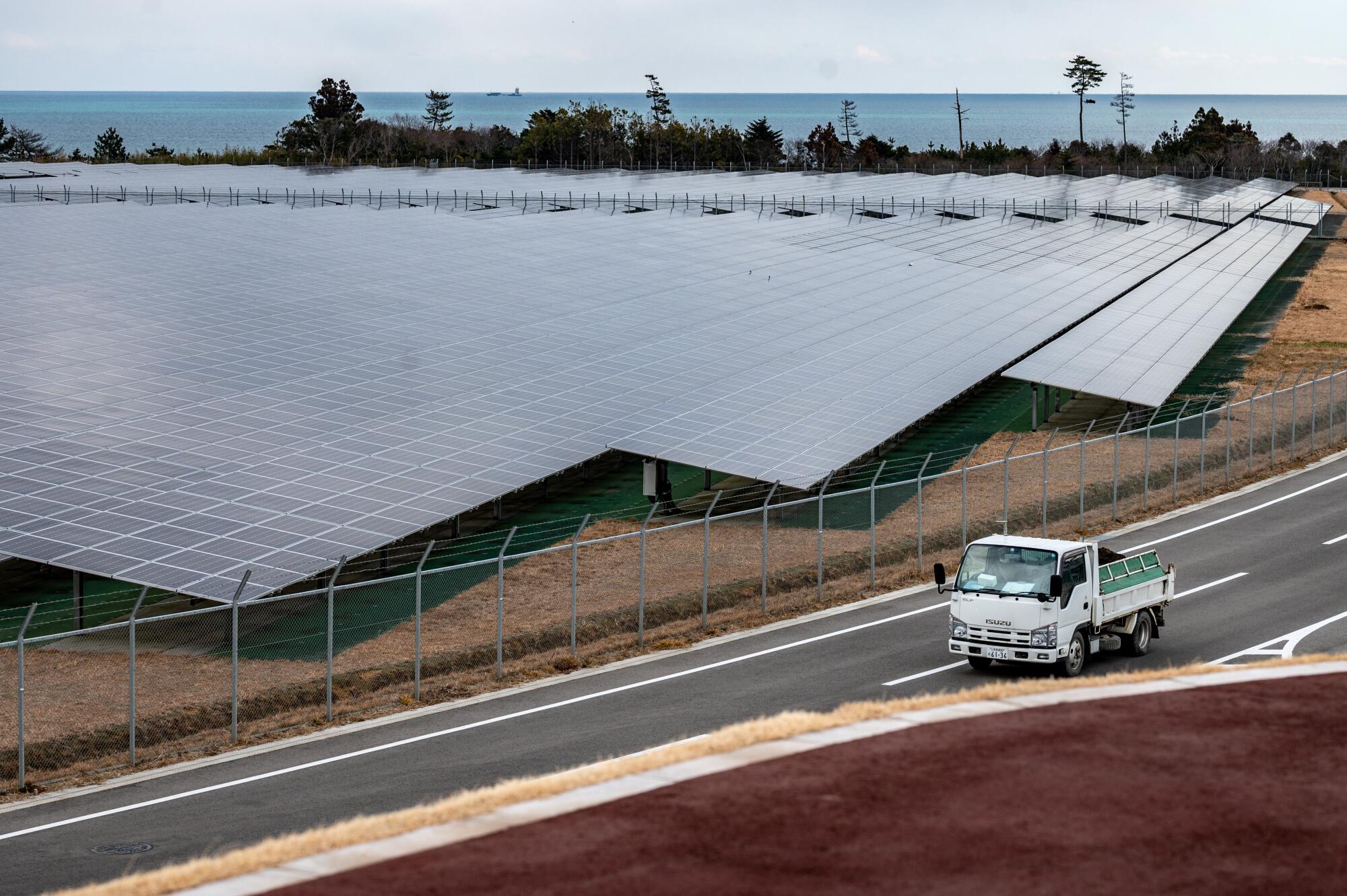
The plaintiffs were between 6 and 16 years old when the accident occurred, and said in the lawsuit that the released radiation caused their cancer. Tepco has said there was not enough radiation exposure in those unevacuated areas to lead to cancer. Government officials have attributed higher levels of thyroid cancer in Fukushima to over-diagnosis after widespread testing.
One 48-year-old resident of Koriyama, a city west of the Daiichi plant and about 30 miles outside the evacuation zone, said she believes her daughter, then 13, developed thyroid cancer because of radiation from the accident.
The mother, who declined to provide her name for fear of harassment for speaking about the sensitive issue, said she didn’t have the resources or ability to move but often wondered whether it would have been better to leave right after the meltdown. Even now, she doesn’t dry her clothes outside anymore.
“Before the accident, we didn’t really think much about the nuclear power plants at all — we were just going about our daily lives,” she said. “But after the explosion, we have had to live in fear of this radiation that we can’t even see.”
A major component of California’s hydrogen hub will center on Los Angeles, where officials will be focused on decarbonizing power plants, ports and trucks.
Besides the air, some residents are also worried about what’s in the water.
Earlier this year, the Japanese government started releasing radioactive wastewater from the destroyed nuclear plant into the Pacific Ocean. Officials say the treated wastewater still contains the radioactive isotope tritium, but at concentrations that meet regulatory standards and are lower than that of other nuclear facilities.
The International Atomic Energy Agency concurs that the plan will have a negligible radiological impact and says the water will be monitored regularly. Tepco says that releasing the wastewater, which has built up in more than 1,000 storage tanks after being used to cool the Fukushima plant’s nuclear fuel rods, is necessary to fully decommission the plant and avert another nuclear accident.
1
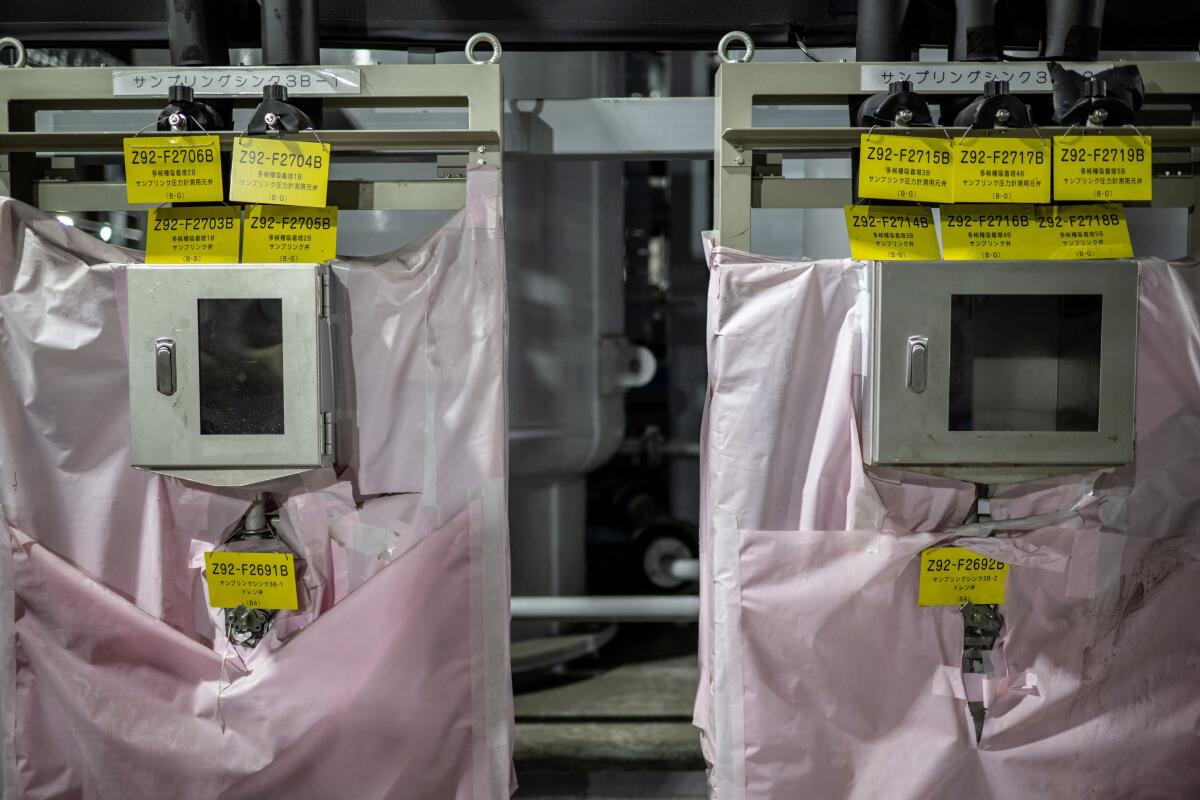
2
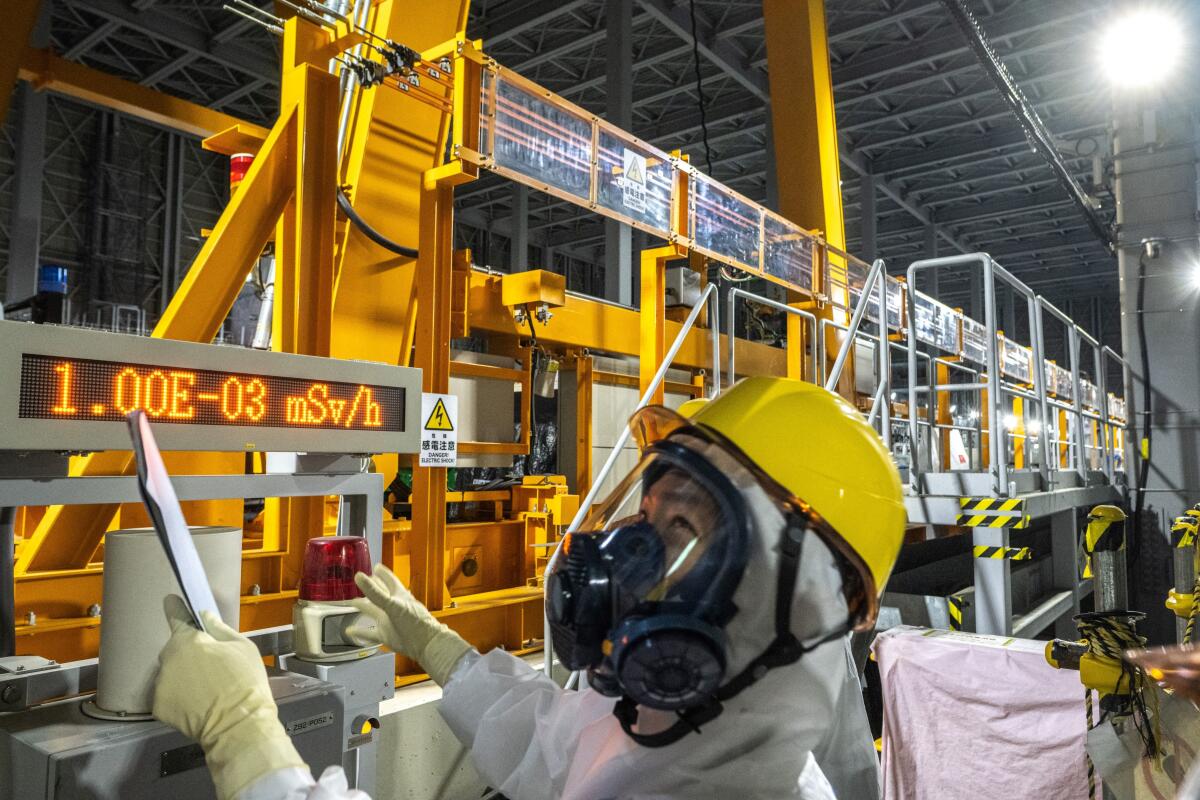
3
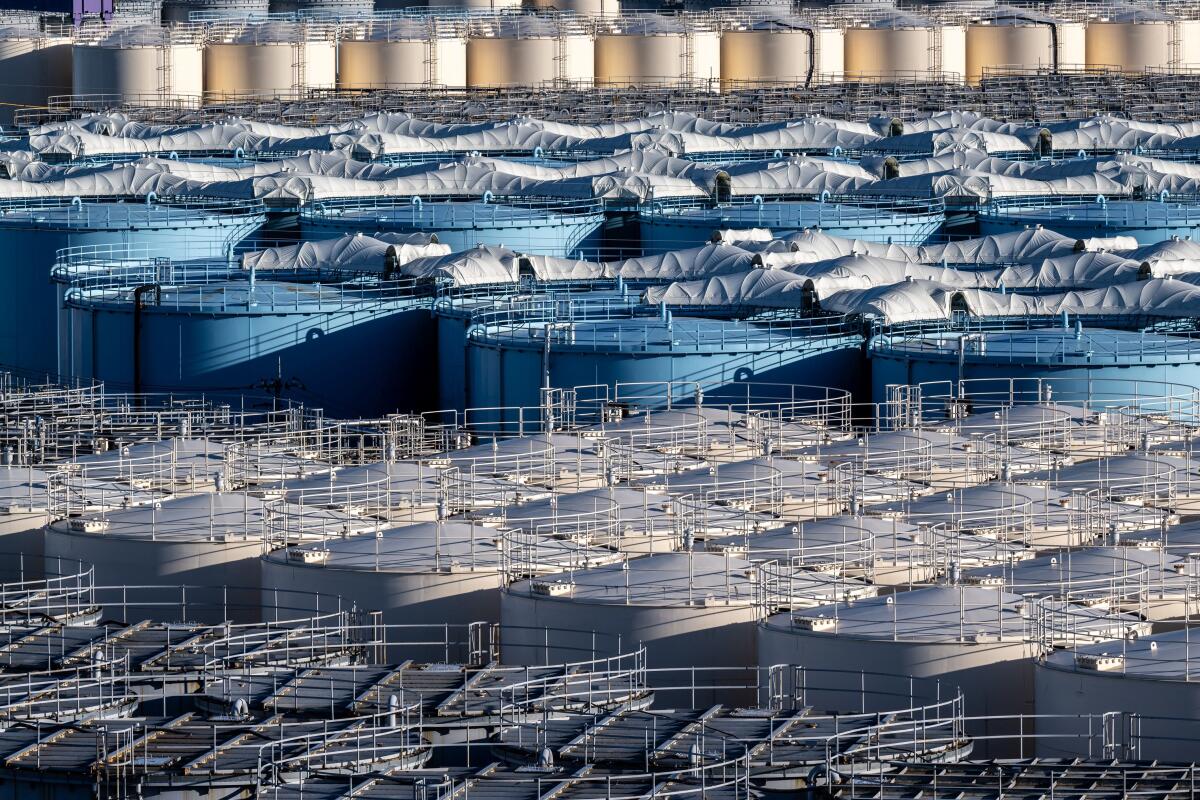
1. The Daiichi nuclear power plant in Fukushima, Japan, was knocked out by a tsunami in 2011. 2. (Philip Fong / AFP via Getty Images) 3. Storage tanks contain radioactively contaminated water at the Daiichi nuclear power plant in Fukushima, Japan. (Philip Fong / AFP via Getty Images)
Masato Kino of the Ministry of Economy, Trade and Industry, who is in charge of the plant’s decommissioning, said the government has conducted about 1,500 meetings with local communities and associations over the last two years to answer questions and allay concerns.
The wastewater release has also angered some of Japan’s neighbors. China has banned all seafood from Japan, accusing the country of being “selfish and irresponsible.” Residents of South Korea and Taiwan have expressed their alarm, though their governments have not taken direct action against it. To persuade skeptics, Kishida posted a video on social media of himself eating raw fish from the waters near Fukushima.
“We tried to be very transparent,” Kino said. “What we can share, we’ve already shared. So I really wonder what else we can do.”

Still, public distrust has lingered given the unprecedented scale of the wastewater release, which will occur incrementally over the next three decades, along with memories of the 2011 disaster.
“Poison is poison, no matter how much you dilute it,” said Konno, the former Namie resident who now lives in Fukushima City, the prefecture capital, and remains a staunch opponent of anything to do with nuclear energy.
At the time of the 2011 earthquake, Konno was working as an engineer at the Onagawa nuclear power plant in the prefecture to the north of the Daiichi facility. He watched gas explosions near his hometown of Namie on TV and wondered if it was the end of the world.
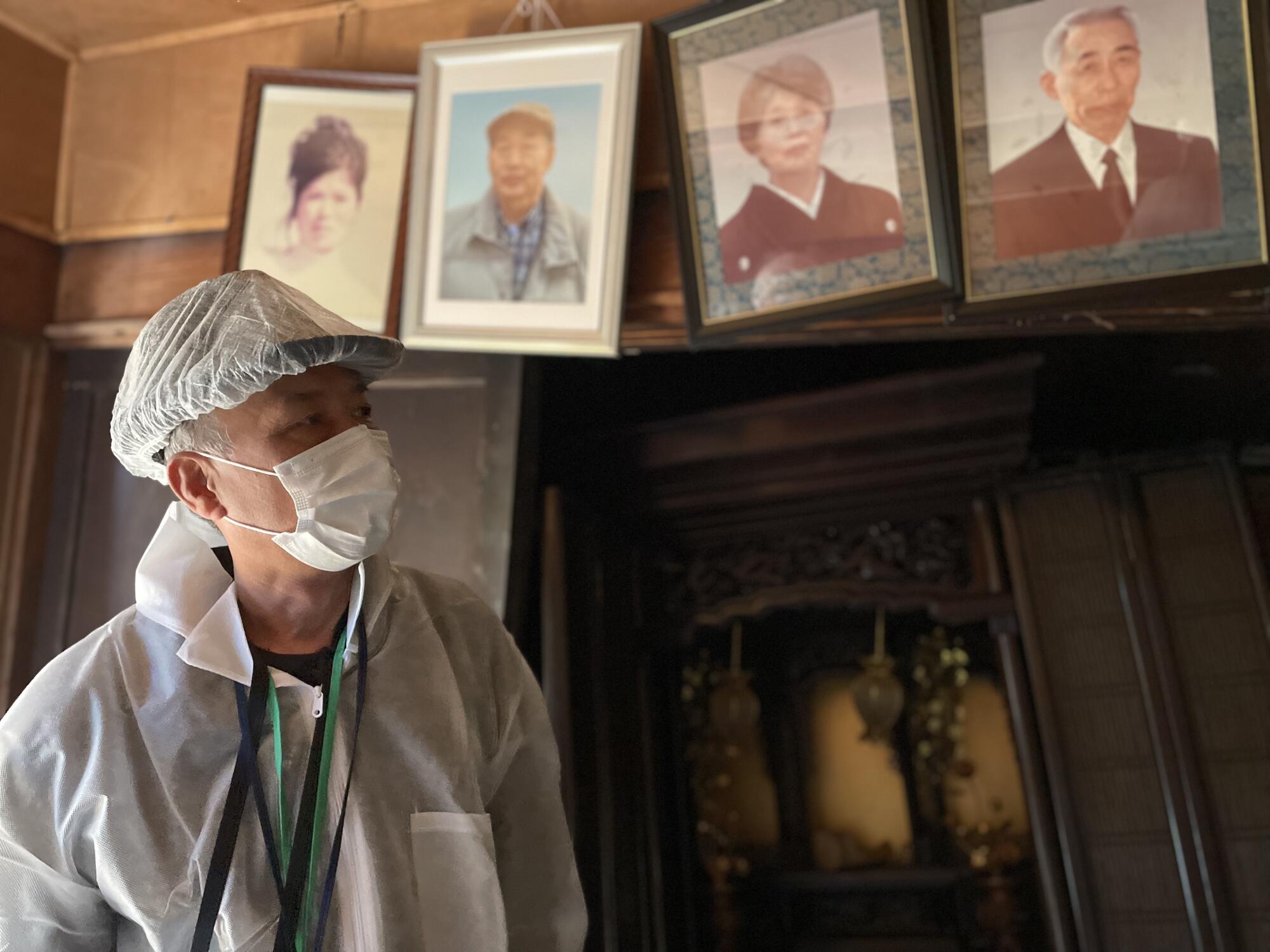
His facility maintained power despite the tsunami. But the flooding kept Konno trapped inside with thousands of other workers; they ate only instant noodles for four days. Once Konno was able to leave, he went to find his family, who had fled to the south.
That was his last day with Tepco. Now, Konno works as a tour guide and actor. He returns to Namie only to show visitors around his old family home, which has been locked up and closed to entry by the general public because of residual radiation.
Often they pass through the neighboring town of Futaba. He points out the deserted streets and the place where a now-infamous sign once declared: “Nuclear Power: Energy for a Bright Future.” The sign was taken down after the accident.
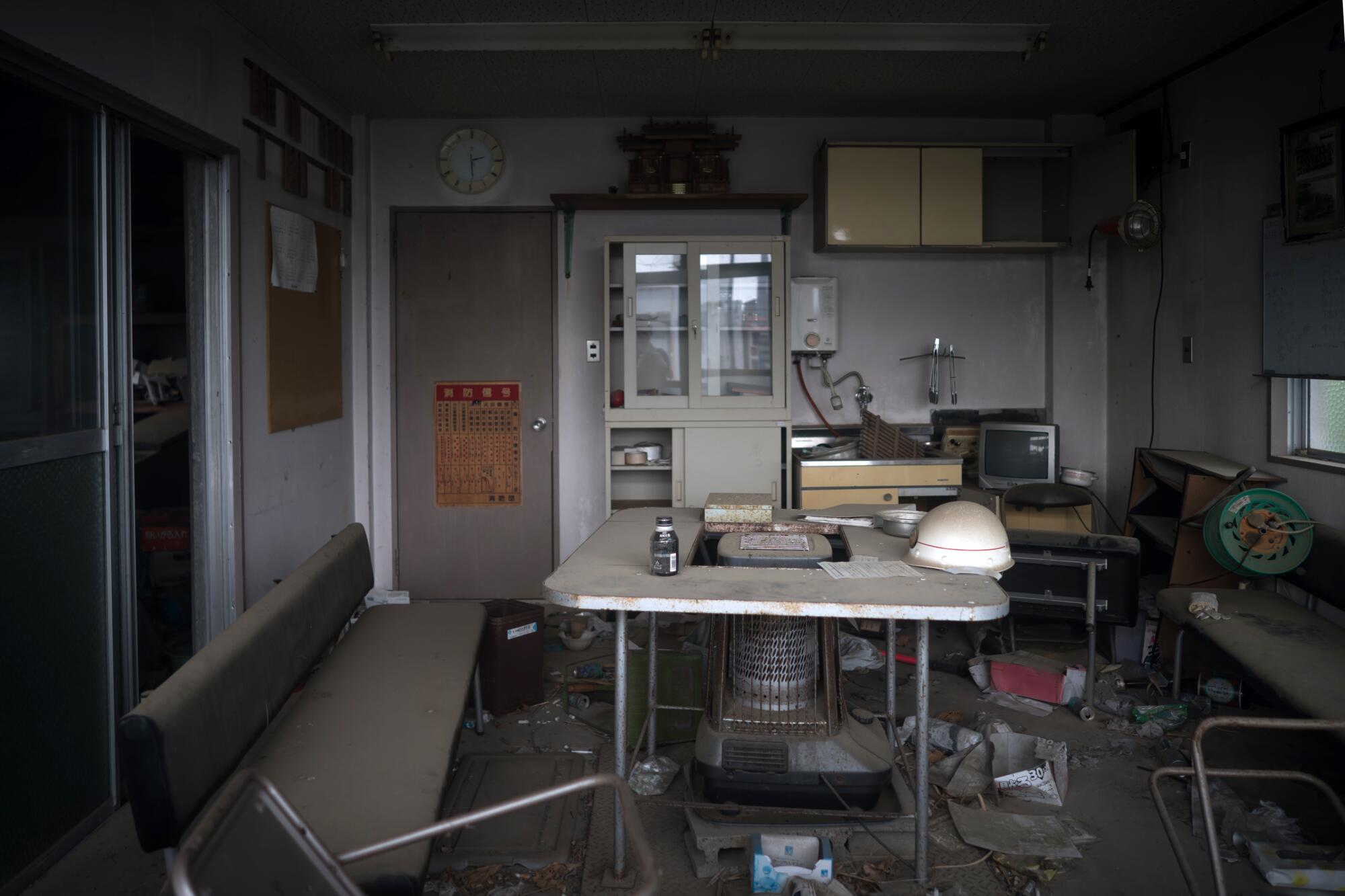
Before the meltdown, the site of Namie’s sleek new hydrogen power plant and industrial complex had been earmarked for another nuclear plant. After the facility was completed in 2020, Konno began including it in his tours, as a reminder that nuclear energy, too, had once been hailed as a safe and exciting new development.
“I don’t have anything against trying new technology for the future, but that shouldn’t be used as a method for covering up the past,” he said, looking out over the expanse of solar panels.
Still, hydrogen seems like a vastly safer bet, one that offers hope for an end to nuclear energy.
“Hydrogen,” he said slowly in English, gesturing at an imaginary signboard. He smiled wryly. “Bright future.”
More to Read
Sign up for Essential California
The most important California stories and recommendations in your inbox every morning.
You may occasionally receive promotional content from the Los Angeles Times.
